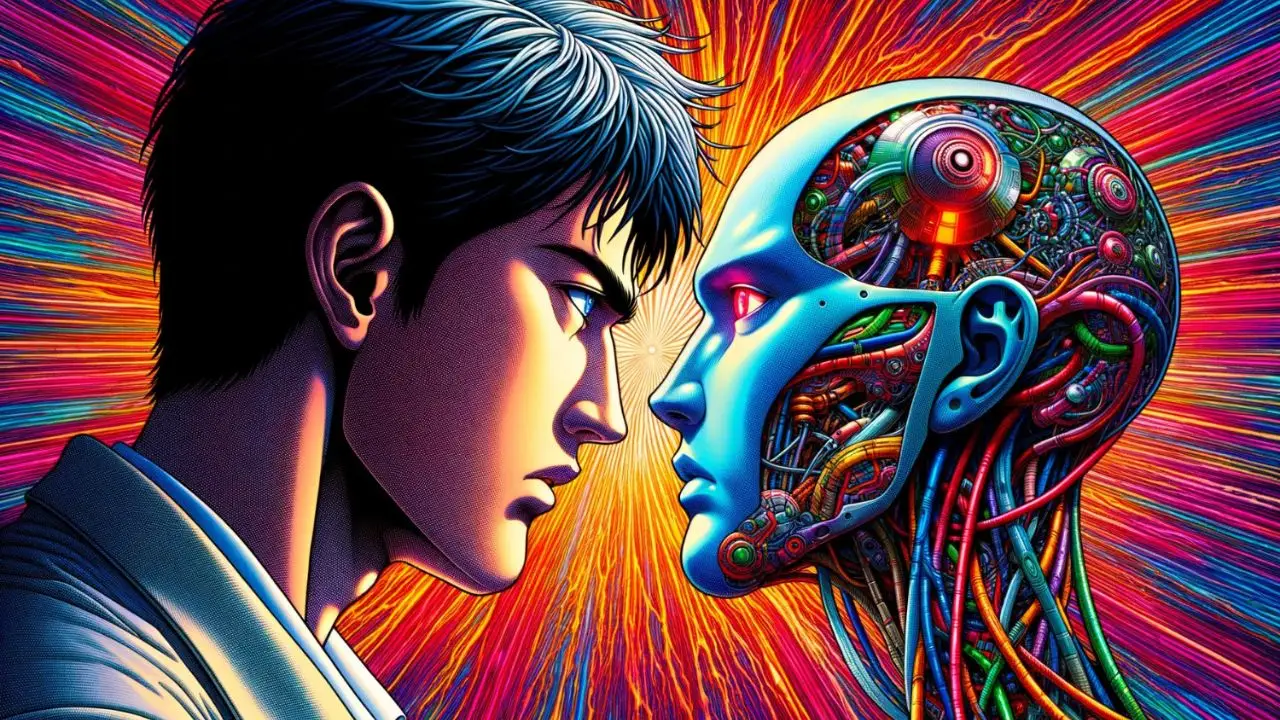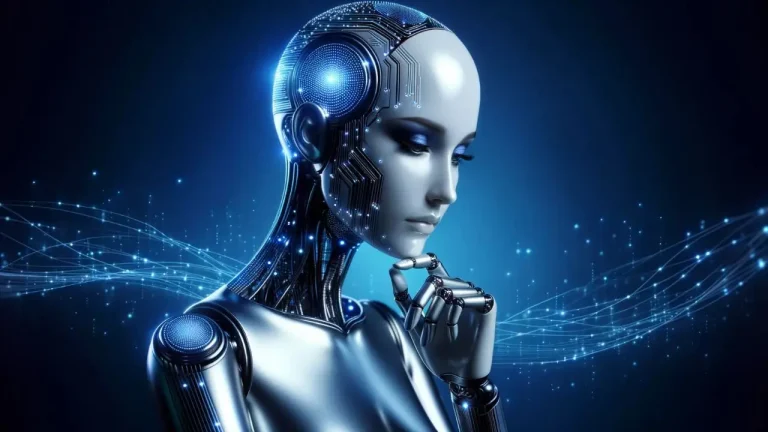Artificial Intelligence Vs Human Intelligence: A Comparative Dive with Examples

Since the term ‘Artificial Intelligence’ began buzzing around every corner of the internet, countless articles and videos have sounded alarms about jobs and overall the fate of humans at risk due to this emerging technology.
Has that ever made you pause and ponder the differences between artificial intelligence and human intelligence? In this blog post, we will dive into the distinctions between human intelligence and machine intelligence, accompanied by illustrative examples.
Storage Capacity and Retrieval
Human beings have always been marveled by the brain’s ability to store and recall information. However, in terms of sheer storage capacity, artificial intelligence holds an advantage. AI systems are capable of storing trillions of data points, far surpassing human capabilities. Humans, on the other hand, are prone to forgetting. Even though information gets stored in our unconscious minds, accessing it can be a challenge. This phenomenon can be described by the Ebbinghaus forgetting curve, which highlights how memories fade over time unless they are actively revisited. Therefore, while AI might have superior storage, humans require methods and revisions to retain information effectively.
Learning Efficiency: Continuity vs. Balance
While both AI and humans are capable of learning, the methods and efficiencies differ significantly. Artificial intelligence systems have the ability to learn continuously, processing vast amounts of information at lightning speeds without any breaks. Their proficiency increases with more use, meaning the more data they process, the better they become. Humans, in contrast, need breaks for rest, relaxation, and other physiological needs. Barbara Oakley emphasizes this by discussing memory retention in humans. She suggests that, for optimal learning, humans need both focused study periods and restful breaks to consolidate and retain information. In essence, while AI can learn around the clock, human learning is more intricate and requires balance.
Fast Processing Power
In the world of computation, AI is faster than human. The underlying architecture of AI systems, rooted in advanced computational mechanisms, enables them to process vast amounts of data at speeds that are incomprehensible to human cognition.
Think of it this way: for, Can you tell me the simple arithmetic, such as 2 × 5 =?
You would say, “Ah! you are kidding me?”
And, for slightly more complex operations like 20 × 5 =?
You would comment, “Everyone knows it.”
Wait, what about this, 228649 × 864279 =?
Stuck? Now, your brain has started to strain, and it might take a considerable amount of time and effort to reach an answer.
In contrast, AI can crunch these numbers in fractions of a second.
This disparity isn’t just limited to mathematics. Whether it’s analyzing vast datasets, processing complex algorithms, or even interpreting intricate patterns, AI consistently outpaces human processing speeds. But it’s essential to understand that this isn’t necessarily about intelligence in a traditional sense. It’s more about raw computational capacity.
Humans possess a multifaceted intelligence, rich with emotions, intuition, creativity, and a myriad of other attributes that are beyond the realms of raw computation. However, when it strictly comes to speed and volume of data processing, artificial intelligence undoubtedly reigns supreme.
The computational power of AI is faster than thought. It can process and conclude an answer or anything much faster than thoughts.

Unwavering Focus: Humans vs. AI
Humans can easily get distracted. One reason is the battle inside our brain. We have an old part called the limbic system, which pushes us towards things we like instantly, like a tasty snack or checking a phone notification. On the other hand, there’s the prefrontal cortex, the part that tells us to stay focused on work or study. These two parts often disagree, making us lose focus.
In contrast, if AI were given a task, like sorting a list of numbers or analyzing data, it doesn’t get lured by cookies or distracted by messages. It doesn’t care if its favorite song is playing or if there’s a party going on next door. AI stays on the task without drifting off, ensuring it gets done efficiently and without pause.
Cost
The cost and resources needed for processing information in AI and human intelligence marks a huge difference. Artificial Intelligence requires physical infrastructure, like servers, and energy to operate. The computational power needed to process data, learn from it, and then apply that learning, all relies on technology which has a financial cost and also consumes energy.
Building, maintaining, and evolving AI systems involve not only financial investment but also a significant amount of electricity to keep the systems running.
In contrast, human intelligence, while it doesn’t have a direct financial cost per thought or decision, it does require resources in a different way, such as food for energy and a suitable environment for healthy development. But we don’t have a direct “server cost” for each cognitive process or thought in the way AI does. Our brains are remarkably efficient, running on roughly twenty watts of power, and capable of a wide array of complex tasks, learning, and emotional responses without additional financial input for each process.
To process information creatively or analytically, all we need is a good sleep.
Emotional Aspect: Emotion and Empathy
Humans have deep feelings and can easily understand when someone is sad or happy. For example, when we see a sad friend, we try to make them feel better because we know how it feels.
In contrast, artificial intelligence, while remarkably advanced in many aspects, falls short in the realm of genuine emotion.
While sophisticated AI systems can be trained to detect and respond to emotional indicators in speech or written text, their responses are the result of algorithms and patterns rather than any intrinsic emotional understanding.
Consequently, AI, despite its vast capabilities, cannot fully replicate the emotional bonds and connections that humans naturally form, making it unlikely for AI to become a complete emotional companion for humans.
AI cannot become a full fledged emotional companion.
Responsibility
Humans inherently hold ethical, moral, and emotional weights in their decisions. When people make decisions, especially in critical areas like healthcare or law, they bring to the table not just analytical thinking but also emotional understanding, empathy, and a moral and ethical framework.
They understand the consequences of their decisions, feel the weight of accountability, and can be held accountable for their actions.
In contrast, artificial intelligence doesn’t possess emotional understanding, ethical considerations, or consciousness.
So, while it can make decisions based on data and programmed algorithms, it doesn’t “understand” the real-world impact of those decisions, nor does it feel responsibility or accountability. AI doesn’t worry about the outcomes or the ethical implications of its output because it lacks awareness and moral compass.
Your point about certain roles, especially those that demand deep ethical consideration, emotional intelligence, and moral responsibility, being irreplaceable by AI in the near future, or perhaps ever, is quite valid. There’s an inherent value in the human capacity for empathy, moral reasoning, and responsibility that is, at present, beyond the reach of AI.
Conclusion
In today’s fast-evolving landscape, it’s undeniable: AI excels in numerous areas, often outperforming humans, and the reality of job displacement due to AI advancements is evident.
However, amidst these transformations, it’s crucial to recognize the innate aspects of human intelligence that remain beyond the reach of machines. While some professions might be at risk, understanding the distinctions between human and artificial intelligence can be our key to adapting and even thriving.
